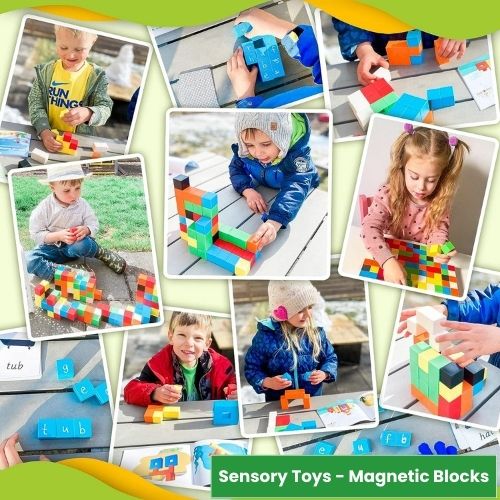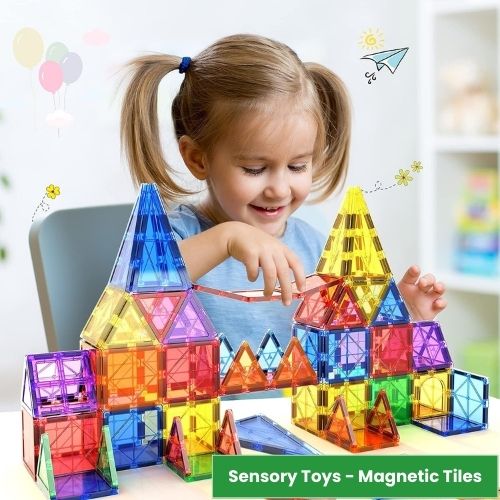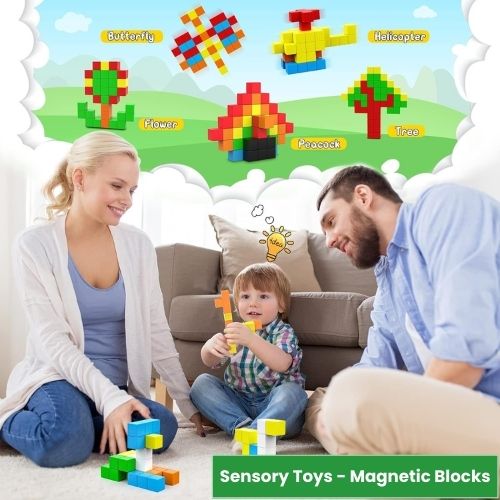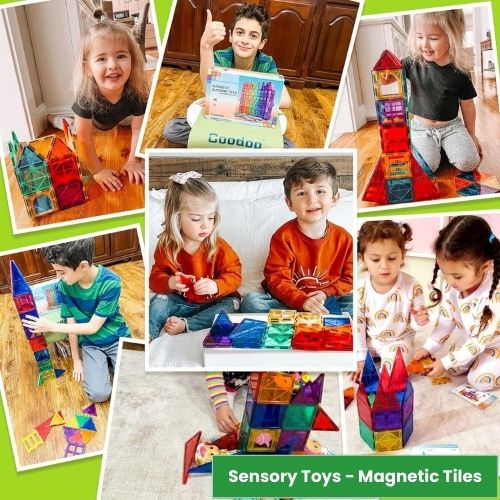Understanding Autism: A Comprehensive Guide
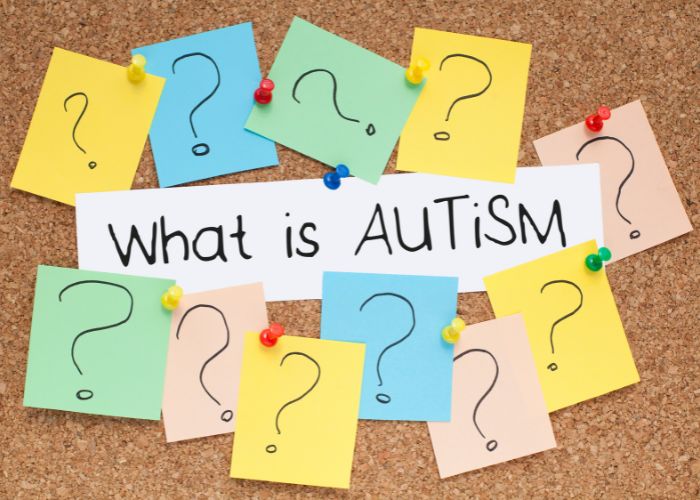
Share this post:
Autism is a complex neurodevelopmental disorder that affects millions of people worldwide. In this article, we will delve into the intricacies of autism, exploring its definition, causes, symptoms, diagnosis, and available treatments. By the end of this comprehensive guide, you will have a deeper understanding of autism and how it impacts individuals and their families.
What is Autism?
Defining Autism Spectrum Disorder
Autism Spectrum Disorder (ASD) is a range of developmental disorders that affect communication, behavior, and social interaction. It is characterized by a wide spectrum of symptoms and challenges, making each individual’s experience unique.
Understanding Autism Spectrum Disorder Autism Spectrum Disorder (ASD) is a complex developmental disorder that affects individuals in different ways. It is often referred to as a spectrum disorder because it encompasses a wide range of symptoms and challenges that can vary greatly from person to person. At its core, ASD affects three main areas of an individual’s life: communication, behavior, and social interaction. These challenges can make it difficult for individuals with autism to navigate everyday situations and interact with others in a typical manner. One of the key characteristics of autism is impaired social interaction. People with ASD may struggle with understanding social cues, body language, and nonverbal communication. They may have difficulty initiating or maintaining conversations, making eye contact, or understanding the perspective of others. This can lead to challenges in building and maintaining relationships. Another hallmark of autism is restricted and repetitive behaviors or interests. Individuals with ASD often engage in repetitive movements or vocalizations, have a strong adherence to routines, and may have intense interests or obsessions in specific topics or objects. These repetitive behaviors serve as a way to self-soothe and find comfort in a predictable world. Communication difficulties are also common in individuals with autism. They may have delays in speech and language development, struggle with understanding and using gestures, or have difficulty expressing their wants and needs. Some individuals with ASD may be nonverbal and rely on alternative forms of communication, such as sign language or assistive technology. It’s important to note that autism is not a disease or a result of poor parenting, as was previously believed. It is a neurodevelopmental disorder that is present from early childhood and persists into adulthood. The exact cause of autism is still unknown, but research suggests a combination of genetic and environmental factors may play a role. Understanding and raising awareness about autism is crucial to creating a more inclusive and supportive society. By recognizing and embracing the unique strengths and challenges of individuals with autism, we can work towards creating a world that celebrates neurodiversity and provides equal opportunities for everyone.
The Causes of Autism
Genetic Factors
Research suggests that genetic factors play a significant role in the development of autism. Certain gene mutations or combinations may increase the risk of ASD.
The causes of autism have been a topic of extensive research and debate within the scientific community. While the exact cause remains unknown, research suggests that genetic factors play a significant role in the development of autism spectrum disorder (ASD). Studies have shown that certain gene mutations or combinations may increase the risk of ASD. These genetic variations can disrupt the normal development and functioning of the brain. It is important to note that there is no single gene responsible for autism, but rather a complex interplay of multiple genetic factors. Researchers have identified several genes that are associated with an increased risk of autism. These genes are involved in various processes crucial for brain development and function, such as neuronal communication, synaptic connections, and regulation of gene expression. Additionally, it is believed that environmental factors may interact with genetic predispositions to contribute to the development of autism. These environmental factors could include prenatal exposure to certain toxins, maternal infections during pregnancy, or complications during birth. It is important to emphasize that autism is not caused by any specific parenting style, vaccines, or external factors that were once erroneously believed to be responsible. The overwhelming scientific consensus points to a complex combination of genetic and environmental factors as the underlying causes of autism. As more research is conducted, our understanding of the causes of autism continues to evolve. Genetic testing and advancements in technology are helping to uncover further insights into the complex genetic factors that contribute to ASD. Ultimately, gaining a deeper understanding of the causes of autism will pave the way for improved diagnostic tools and targeted interventions to support individuals on the autism spectrum.
Sensory Toys - Toy for Autism
Autism is a complex disorder that affects the way a person communicates and interacts with others. It can be difficult for children with autism to engage in meaningful play and learning activities. Large Magnetic Cube Toys and Magnetic Tiles for Sensory STEM Education are great solutions for those looking to provide meaningful play and learning activities for children with autism. The set includes a variety of colorful magnetic blocks that are designed for children with autism to play with, explore, and interact with. Each cube has unique magnetic properties that allow for endless possibilities of creative play and encourages problem-solving and critical thinking skills. The cubes are also perfect for sensory exploration, helping to stimulate tactile, visual, and auditory senses.
Environmental Factors
While genetics are crucial, environmental factors during pregnancy and early childhood can also influence the development of autism. Factors like prenatal exposure to toxins or infections have been studied extensively.
Environmental Factors: Impact on Autism Development While genetics play a significant role in the development of autism, research has shown that environmental factors during pregnancy and early childhood can also have an influence. Understanding and identifying these factors is crucial to better comprehend the complexity of autism spectrum disorder (ASD) and potentially implement preventive measures. One of the prominent areas of study regarding environmental factors and autism is prenatal exposure to toxins. Research suggests that exposure to certain chemicals or substances during pregnancy may increase the risk of developing ASD in children. These toxins can include air pollutants, pesticides, heavy metals, and certain medications. It is important for expectant mothers to be aware of potential environmental hazards and take necessary precautions to minimize exposure. Additionally, prenatal infections have also been linked to an increased risk of autism. Certain viral or bacterial infections during pregnancy can potentially affect the developing brain of the fetus, leading to a higher likelihood of ASD. Researchers are actively studying the mechanisms through which these infections may impact neurodevelopment and exploring strategies for early detection and prevention. Beyond the prenatal period, the early childhood environment also plays a significant role. Studies have shown that early exposure to environmental stressors, such as maternal stress, can influence the risk of autism. High levels of stress during pregnancy and early childhood have been associated with an increased likelihood of ASD diagnosis. It is important to create nurturing and supportive environments during these critical developmental periods to promote optimal brain development and reduce potential risk factors. While genetics remain a primary factor in autism development, understanding and addressing the impact of environmental factors is essential for a comprehensive approach. By promoting awareness, conducting further research, and implementing protective strategies, we can strive to create a safer and more supportive environment for the healthy development of all children.
Recognizing the Signs
Early Warning Signs
Diagnosing autism early is crucial for effective intervention. Some early signs include limited eye contact, delayed speech development, and a preference for solitude.
Early Detection of Autism for Effective Intervention When it comes to autism, early detection is key. The earlier autism can be diagnosed, the earlier intervention can begin, leading to better outcomes for individuals on the spectrum. It’s important for parents, caregivers, and professionals to be aware of the early warning signs that may indicate the presence of autism in a child. One of the first signs to look out for is limited eye contact. Typically, babies naturally seek eye contact with caregivers and engage in social interactions through eye gaze. However, children with autism may avoid or have difficulty making eye contact, which can be an early indication of social communication challenges. Delayed speech development is another common early sign of autism. While it’s important to remember that every child develops at their own pace, significant delays in speech or language milestones, such as not babbling or using single words by 12 months, or not speaking simple sentences by 24 months, may be cause for concern. Additionally, a preference for solitude or difficulty with social interactions can be observed in children with autism. They may exhibit a lack of interest in playing with others, preferring to engage in repetitive or solitary activities. This can manifest as a limited desire for social engagement or difficulty in understanding and responding to social cues. It’s crucial not to jump to conclusions based on any single sign or behavior, as these can vary widely among children. However, if you notice a combination of these early warning signs, it is advisable to consult a healthcare professional or specialist who can conduct a comprehensive assessment. Early detection of autism allows for early intervention, which has been shown to significantly improve outcomes for individuals on the spectrum. With the support of professionals and appropriate interventions, children with autism can develop important skills, improve social communication, and thrive in their daily lives.
The Autism Diagnosis
Formal diagnosis typically occurs in childhood, with the assessment conducted by specialists who observe behavior, communication, and social interactions.
Types of Autism
High-Functioning Autism
Some individuals with autism have average to above-average intelligence and are considered high-functioning. They may excel in specific areas, such as mathematics or music.
High-functioning autism, also known as Asperger’s syndrome, is a form of autism in which individuals have average to above-average intelligence. Despite their intelligence, they may struggle with social interaction and communication. It is important to note that each individual on the autism spectrum is unique, and their symptoms can vary greatly.
Some individuals with high-functioning autism may excel in certain areas, such as math or music, due to their ability to focus intensely on specific topics. However, they may also struggle with sensory overload and have difficulty processing emotions. While high-functioning autism may not be as noticeable as other forms of autism, it can still greatly impact an individual’s daily life. It is important for individuals with high-functioning autism to receive support and accommodations to help them navigate the challenges they may face.
Low-Functioning Autism
Conversely, low-functioning autism is characterized by significant developmental delays and intellectual disabilities. These individuals may require more comprehensive support.
Low-functioning autism, also known as classic autism, is a form of autism that is characterized by significant developmental delays and intellectual disabilities. These individuals may have difficulty with communication and social interaction, and may exhibit repetitive and restrictive behaviors. They may also have difficulty with daily living activities such as dressing, feeding, and toileting. It is important to note that low-functioning autism is not a reflection of a person’s intelligence or potential. Many individuals with low-functioning autism have unique strengths and talents, but may require more comprehensive support to reach their full potential.
The level of support needed for individuals with low-functioning autism can vary depending on the severity of their symptoms and the level of intellectual disability. Some individuals may require constant supervision and assistance with daily activities, while others may be able to live independently with some support. It is important for caregivers and family members to work closely with healthcare professionals to develop a personalized plan that addresses the unique needs of the individual with low-functioning autism. With the right support and resources, individuals with low-functioning autism can lead fulfilling lives and make valuable contributions to society.
Treatment and Support
Early Intervention
Early intervention programs can make a substantial difference in the lives of children with autism. These programs focus on speech therapy, behavioral therapy, and educational support.
Early intervention is crucial for children with autism, as it can significantly impact their growth and development. Treatment and support play a vital role in helping these children thrive and reach their full potential. One of the key components of early intervention programs is speech therapy. Many children with autism struggle with communication skills, and speech therapy aims to improve their ability to express themselves effectively. Through various techniques and exercises, speech therapists help children develop language skills, such as vocabulary, sentence formation, and articulation. This therapy not only enhances their communication abilities but also boosts their confidence and social interactions. Behavioral therapy is another essential aspect of early intervention for children with autism. This type of therapy focuses on addressing challenging behaviors and teaching appropriate alternatives. Behavioral therapists work closely with the child and their family to identify triggers and implement strategies to manage and modify behaviors. Through positive reinforcement and structured routines, children learn to navigate social situations and develop essential life skills. In addition to speech and behavioral therapy, early intervention programs provide educational support tailored to the unique needs of children with autism. Specialized educators create individualized learning plans to enhance cognitive, academic, and social development. These programs often incorporate visual aids, structured activities, and sensory integration techniques to create an optimal learning environment for the child. The combination of speech therapy, behavioral therapy, and educational support in early intervention programs creates a comprehensive approach to treating and supporting children with autism. These interventions not only help children with autism acquire necessary skills but also empower them to lead fulfilling and independent lives. By addressing their needs at an early age, we can make a substantial difference in their overall development and pave the way for a brighter future.
Behavioral Therapy
Behavioral therapy techniques, such as Applied Behavior Analysis (ABA), help individuals with autism develop essential skills and manage challenging behaviors.
Behavioral therapy techniques, such as Applied Behavior Analysis (ABA), have been proven effective in helping individuals with autism develop essential skills and manage challenging behaviors. This form of therapy focuses on understanding the relationship between behavior and the environment to bring about positive changes. One of the key principles of behavioral therapy is the identification of specific target behaviors that need to be addressed. These behaviors can range from communication difficulties to repetitive behaviors or social skills deficits. By clearly defining the target behaviors, therapists can create personalized treatment plans that are tailored to the individual’s needs. The foundation of behavioral therapy lies in the use of positive reinforcement. This technique involves rewarding desired behaviors to increase their occurrence. For example, if a child with autism is working on improving their communication skills, they may be rewarded with praise or a small treat when they use words to express their needs or desires. Over time, this positive reinforcement helps strengthen and reinforce the desired behaviors, making them more likely to occur again in the future. Another important aspect of behavioral therapy is the use of visual supports and structured routines. Individuals with autism often benefit from visual cues and clear expectations. Visual supports, such as visual schedules or social stories, help individuals understand what is expected of them in different situations and can reduce anxiety or confusion. Implementing structured routines also provides a sense of predictability and can help individuals with autism feel more calm and in control. Behavioral therapy techniques also address challenging behaviors by focusing on the function or purpose behind them. Instead of simply trying to eliminate those behaviors, therapists work to understand why they occur and teach alternative, more appropriate behaviors. This approach helps individuals with autism learn new strategies for coping with their needs and emotions. Applied Behavior Analysis (ABA) is a widely recognized and evidence-based approach within the field of behavioral therapy. It involves breaking down complex skills into smaller, manageable steps and using systematic teaching methods to promote skill acquisition. ABA interventions are often highly individualized and can be implemented across different settings, including home, school, and community settings. Overall, behavioral therapy techniques, such as Applied Behavior Analysis, provide individuals with autism the opportunity to develop essential skills, improve their quality of life, and better navigate the world around them. By focusing on positive reinforcement, visual supports, structured routines, and understanding the function of challenging behaviors, behavioral therapy empowers individuals with autism to reach their full potential.
Living with Autism
Challenges Faced
Living with autism can pose various challenges, including difficulties with social interactions, sensory sensitivities, and communication barriers.
Living with autism can present unique challenges for individuals on the spectrum and their families. Each person’s experience with autism is different, but there are some common challenges that many face. One of the main challenges is navigating social interactions. Individuals with autism often struggle with understanding social cues, making it difficult to form and maintain relationships. They may find it challenging to pick up on nonverbal communication, such as facial expressions and body language, which can make social situations overwhelming and confusing. Sensory sensitivities are another common challenge for those with autism. Individuals may have heightened sensitivity to certain sounds, lights, textures, or smells. These sensory sensitivities can cause discomfort or even distress, leading to difficulties in daily activities and environments. Communication barriers can also be a significant challenge. People with autism may have difficulties with verbal and nonverbal communication. Some individuals may have limited speech or struggle with expressive language skills, making it challenging for them to express their thoughts and emotions. Others may have difficulty understanding and interpreting spoken language, leading to miscommunication and misunderstandings. Despite these challenges, it’s important to remember that individuals with autism also have unique strengths and abilities. Many possess exceptional attention to detail, creativity, and problem-solving skills. With the right support and understanding, individuals with autism can thrive and lead fulfilling lives. It is crucial for society to be inclusive and provide support for individuals living with autism. By fostering acceptance, promoting understanding, and creating accessible environments, we can help individuals with autism overcome challenges and reach their full potential.
Celebrating Differences
It’s important to acknowledge that individuals with autism, like all people, have unique strengths and challenges. While some individuals with autism may possess exceptional artistic or mathematical abilities, others may struggle with social interactions or sensory sensitivities. It’s crucial to approach each person with autism as an individual and recognize their unique strengths and needs.
For those who do have exceptional talents, it’s important to provide opportunities for them to explore and develop those talents. Programs and resources that focus on developing artistic or mathematical skills can be beneficial for individuals with autism and can lead to fulfilling careers and hobbies. However, it’s also important to remember that not all individuals with autism will have exceptional talents in these areas, and it’s essential to support them in finding their own passions and strengths. By recognizing and celebrating the unique talents and strengths of individuals with autism, we can create a more inclusive and supportive society for all.
Conclusion
In conclusion, autism is a complex and multifaceted condition that requires understanding, support, and acceptance. With early diagnosis and appropriate interventions, individuals with autism can lead fulfilling lives and make valuable contributions to society.
Autism Frequently Asked Questions
Is autism a rare condition?
No, autism is not rare. It is estimated that approximately 1 in 68 children is diagnosed with autism in the United States.
Can autism be cured?
There is no known cure for autism, but early intervention and therapy can significantly improve the quality of life for individuals with autism.
What are sensory sensitivities in autism?
Sensory sensitivities refer to heightened or diminished responses to sensory stimuli, such as lights, sounds, or textures. Many individuals with autism experience sensory sensitivities.
Are there any famous individuals with autism?
Yes, several famous individuals, including Temple Grandin and Dan Aykroyd, have been open about their autism diagnoses and have achieved great success in their respective fields.
How can I support a family member with autism?
Providing understanding, patience, and emotional support is crucial when supporting a family member with autism. Additionally, connecting with autism support organizations can offer valuable resources and guidance.
Related Posts



